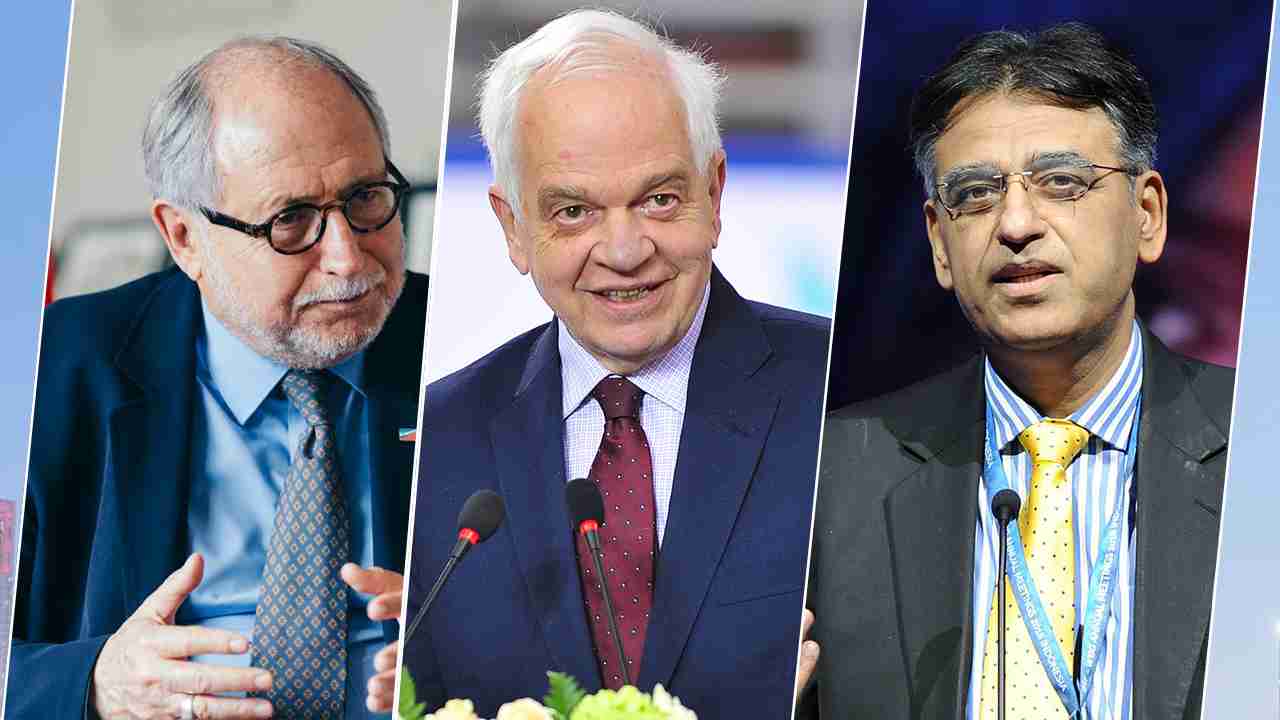
Business
13:19, 09-Nov-2018
Foreign officials coming to China’s import fair seek assurance on trade stability
Updated
12:33, 12-Nov-2018
CGTN

Halfway through China's first ever import fair, the world's second largest economy has not only seen thousands of companies eager to impress local consumers, but also foreign officials who, while on a mission to promote the products of their national pride, are seeking assurances from the Chinese market when the international trading system is being challenged by anti-globalization fervor.
Speaking at Argentina's pavilion during the first China International Import Expo (CIIE), which opened on Monday in Shanghai, Diego Ramiro Guelar, the Argentine Ambassador to China, told CGTN that his country has been beefing up ideas for exporting more food products in the competitive Chinese markets and streamlining its export structure.
The former trade negotiator for beef exports to China said there was little understanding of the importance of the Chinese market, which has changed, adding that its trade policy is eyeing the export of more value-added products, not only "commodities."
China is now Argentina's leading market for agricultural products and also Argentina's second-biggest trading partner, after Brazil. Argentine exports to China mainly comprise agricultural goods, such as soybeans, mineral fuels, and meat products.
John McCallum, the Canadian Ambassador to China, has been greasing the wheels for meetings between the Canadian delegation, which includes six federal ministers and three provincial premiers, with Chinese trading partners. He said that what Canada can offer is not limited to “healthy” agricultural products, but also “innovation” and the country wants to exhibit a wide variety of goods at the CIIE.
“What Chinese people often don't know is that Canada is also an innovating country,” he said. “We had 13 of the 100 top technological innovations, and we have a lot of new clean tech products as well as in traditional areas.”
“We're hoping to make a splash at this event in Shanghai,” the ambassador said, noting that the government is considering diversifying and expanding its exports to China. Canadian statistics show that Canada's imports from China were around 55 billion US dollars in 2017, while its exports to China totaled around 19 billion US dollars.
The officials have also addressed the concerns looming in the backdrop of the CIIE over the trade frictions between the world's top two economies.
Warning of a "danger" of having just one "hyper superpower" like the US, Guelar expressed, however, optimism about the ongoing trade frictions between China and the US, whose leaders are scheduled to meet at the G-20 summit in Buenos Aires, Argentina, later this month.
"We are not seeing a war – it's really a negotiation of this very close association," the ambassador said, hoping China and the US – as the "most important association" in the history of the world – would ease their trade tensions soon.
The Canadian ambassador – who is also an economist – said Canada would not fuss with the trade “imbalance” issue like the US does. “We want to grow trade and export more to China,” he added.
McCallum said that the country's official target in the trade area is to double the current volume by 2025, adding that despite some concerns on Canada's part over market access in China, the two sides have shown confidence in solving the issue and deepening economic ties through talks.
Although the new trade agreement between the US, Mexico, and Canada includes language that may prevent Canada from creating a trade deal with a so-called “non-market country,” McCallum believed the agreement doesn't prevent Canada from deepening economic relations with China in many ways.
With the limelight the CIIE has shined on the relations between China and the US, other issues that arise from the tension has also been brought to the forefront during the event.
In response to a question about Pakistan's recent financial difficulties, the country's finance minister Asad Umar didn't paper over the problem, but dismissed that Pakistan has a “China debt problem,” referring to an allegation by the US against China that the latter has been “trapping countries with mounting loans.”
Under the China-Pakistan Economic Corridor (CPEC) projects, the Pakistani government was granted Chinese loans to build billions of dollars of infrastructure projects, from railways to roads. CPEC has become the poster child for these Chinese debt trap allegations.
Umar called the idea of CPEC being some kind of sinister move by China to cause economic problems to Pakistan “absolutely nonsense.” He emphasized that CPEC is “an excellent example of cooperation between two countries, which is a benefit to both sides.”
Pakistan's external debt had increased to 95.1 billion US dollars by the second quarter of 2018, according to the State Bank of Pakistan. Of Pakistan's public debt portfolio, Umar said that China debt is no more than 10 percent of the total, which is a not significant figure.
Umar commented that the percentage of debt to GDP of Pakistan is high but still manageable. “The reason why debt sustainability is a problem in Pakistan is that we don't have enough exports. We just are not generating enough foreign currency inflows to be able to service the debt, and that's the fundamental problem,” he added.
While speaking of solutions to this problem, apart from increasing domestic savings, Umar also highlighted the importance of working with bilateral partners such as China to boost exports – cooperation that could be enhanced under events like the CIIE.

SITEMAP
Copyright © 2018 CGTN. Beijing ICP prepared NO.16065310-3
Copyright © 2018 CGTN. Beijing ICP prepared NO.16065310-3